Blog
Know your…. vintage clothing enemy!
It is the beginning of Summer* (*imagination required); the days are long, flowers are in bloom and the birds are singing. It is perfect weather for a romantic stroll in the park. You reach into the depths of your cupboard and pull out your favourite dress. You put it on and perform a swirl – careful to check you look good from all angles – only you realise that your dress doesn’t look as good as it did last Summer…. Wait, you exclaim, ‘these holes weren’t here before?!’
It can be one of the most frustrating situations facing passionate vintage collectors. These little pests can easily get in to your home and destroy your treasured vintage fabric – if – you are not prepared! Ladies and gentlemen may I present, vintage clothing enemy number one, Tineola bisselliella, the common clothes moth.
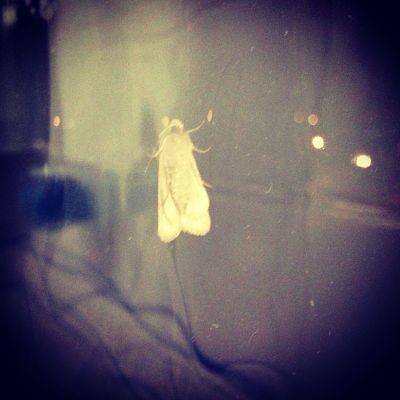
Moth Facts
Moth damage is by no means new; the clothes moth has been a nuisance to mankind since the beginning of civilisation – they very probably existed before mankind, but in relatively small numbers. When civilisation grew and mankind multiplied, using the fleeces from sheep for everyday goods, the moth had opportunity to expand and multiply rapidly. They soon developed a taste for woven natural fabrics – especially that of woollen textiles.
Fabrics most likely to be under attack are; Cashmere, Wool, Fur, Ostrich Feathers, and occasionally Silks and Paper.
Types of Clothes Moth
There are four types of clothes moth; The Common Clothes Moth, tineola bisselliella; The Case-bearing Clothes Moth, Tinaea pallionella; The Tapestry Moth, Tricophaga tapetzella; and The Large Pale Clothes Moth, Tinaea pallescentella. It is most likely that you have already come across the first two types at some point; these are the two most likely to have made a meal out of your wardrobe!
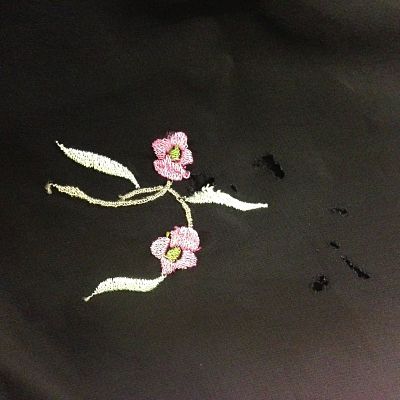
The Common Clothes Moth
The Common Clothes Moth is also known as the Webbing Moth, which derives from its habit of making webs with wool fibres. Moths have four life stages; egg, larva, pupa and moth. Common Moths are dull in colour, with long and narrow greyish wings. Female moths live for two weeks and lay as many as 260 opalescent ivory coloured eggs. These eggs eventually become larvae and can be fully grown in seven weeks in optimum conditions, or can take up to four years to fully mature in adverse conditions.
Common moth larvae are white and have a tawny worm-like head, ‘three pairs of legs’ and ‘four abdominal false legs’. It is these small white larva that damage our precious vintage fabrics. They have a huge appetite, eating all tasty fibres within their vicinity, and grow to nearly half an inch, shedding their skin up to seventeen times – eek! – after which, the larvae form a cocoon and eventually emerge as a moth.
The Case Bearing Clothes Moth
The Case Bearing Clothes Moth, also known as the Fur Moth or Single Spotted Clothes Moth, has surprisingly, a taste for fur! You can tell this type of clothes moth from the other because its first wings – yes it gets two pairs! – are brown and spotted. The second pair are lighter and silky in appearance, and their larvae is yellowy-white.
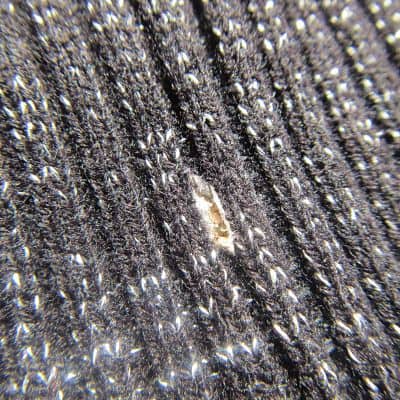
Moth Prevention
As moths spend most of their life in larval form the potential for damage is very great. There isn’t a lot of information available on how to halt these little critters, and you can easily forget to take any measures until it is too late. However, if you want to avoid an infestation this Summer there are a few hints and tips – tried and tested – to keep those moths to a minimum!
Tips that cost nothing…
- Wash and dry clean Winter knitwear and other high-risk garments before you store them; there are many different kinds of stains that you may not see that will leave a layer of organic material that moth larvae love to feed on.
- Keep your clothing well ventilated; moths love dark quiet places where they can hide.
- Move your garments around! (I regularly swap my vintage garments around and give them a little shake. For one, it is good for your fabrics to breathe. Secondly, if there was to be a moth then it would run or fly and then….)
- … show no mercy; If you see a moth, eradicate it.
- Vacuum and clean cupboards and drawers regularly.
- Keep an eye out for any suspicious looking particles, these could be moth eggs. (What to do with these is discussed later!)
- Do not store clothing in containers – especially plastic ones – as these tend to cause the garments to sweat and increase the chances of a moth strike.
- Store clothing in a dry location with low humidity if possible.
- Always check Anti-Moth product packaging for chemical or hazardous content and beware of pets and children who may be vulnerable.
- Spray a mist of perfume gently over your cotton garments and place next to moth-prone items; moth larvae cannot penetrate cotton and they don’t like strong smells.
Tips that come at a small price…
- Buy some natural repellant sachets or wardrobe hangers; usually lavender fragranced, or in natural cedar wood, these will not kill the moths but aim to keep them away.
- Avoid cheap “mothballs”; these old fashioned, usually white “mothballs” may work but have a strongly unnatural smell and can contain potentially harmful chemicals.
- Invest in a longer lasting product; an electrocuter is simple and effective way to attract and destroy moths – and other unwanted flying insects. The bulbs are not so cheap but do last a fair time and their effectiveness outweighs the cost.
- Look to buy mothproofed wool fabrics where possible.
- Have your most precious clothing professionally mothproofed and sprayed using dry ice.
- Pay now not later; store your favourite furs off season with a commercial cold storage professional. A professional should make sure that your items are stored securely in cool temperature and low humidity environment, and sometimes offer insurance.
- Avoid DIY Moth killer sprays; these are not easy to use, can smell strongly of chemicals and are likely to be harmful to the environment.
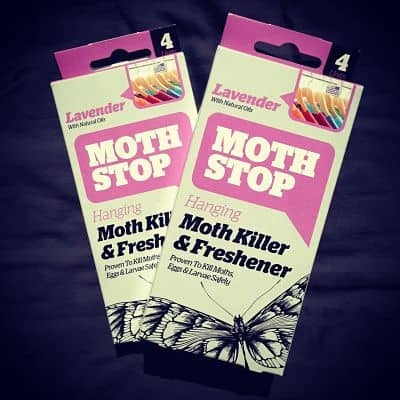
Anti-Moth Products
Natural deterrents
There are a few prepared natural deterrents that you can buy. Cedar blocks or lavender sachets are most common; Cedar blocks can be lightly sanded every few weeks to keep the fragrance strong. Lavender sachets can be refreshed with fresh lavender or lavender oil every few months. Lakeland do some sets that are inexpensive and really good!
A great alternative is to make your own! Fill a little drawstring cotton bag with a mixture of dried rosemary, mint, thyme, ginseng and cloves. Or place a few drops of one or two of the following traditional oils on a square of cotton; tansy, woodruff, camphor, sandalwood, peppermint or rosemary. These smell lovely and can be placed in cupboards and drawers!
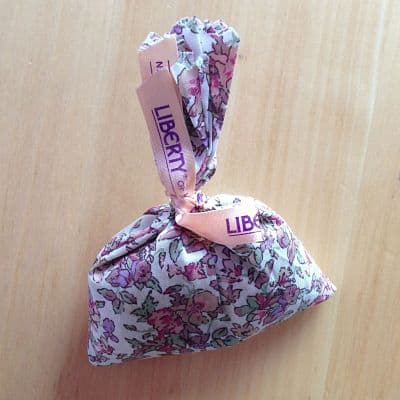
Manmade options
There many types of prepared manmade anti-moth products; solid perfumed repellants, solid perfumed exterminators, solids that do both, sprays, glue boards and electric devices.
Repellants simply deter the moths. Exterminators will eliminate them. Always check the product packaging to see if the product will eliminate moths AND their eggs – ideally this is what you want when you have seen one or two moths already lurking about.
Sprays destroy moths and often their eggs on contact but are not easy or pleasant to use in the home and can be toxic to humans, pets and the environment.
Glue boards exterminate moths; they use pheromones to attract moths to the product and stick them there, but only attract either male or female moths and not both.
A more costly but very effective solution is a good electric device. Electric devices emit a specific spectrum of light that attracts the moths and eliminate them on impact, however, these cannot destroy the eggs.
Eradicating Moth Eggs – Naturally
So, you’ve got rid of the moths, now you have to tackle the eggs. Of course you can purchase a special moth egg killing spray , or pay a specialist. However, a cheaper and just as effective traditional method is to put the affected garments in a plastic bag and in to the freezer for seven days. The cold is said to kill moths and destroy moth eggs. After this, dry clean the garment…. Just a word of caution; it is a good idea to consider how the cold temperature might affect your vintage fabric before you put it in the freezer!
After dealing with these little pests for several years, we have found a combination of natural repellants and man-made traps to be the best solution – and we have learnt – prevention is better than the cure. Whatever methods you decide to use – good luck!

